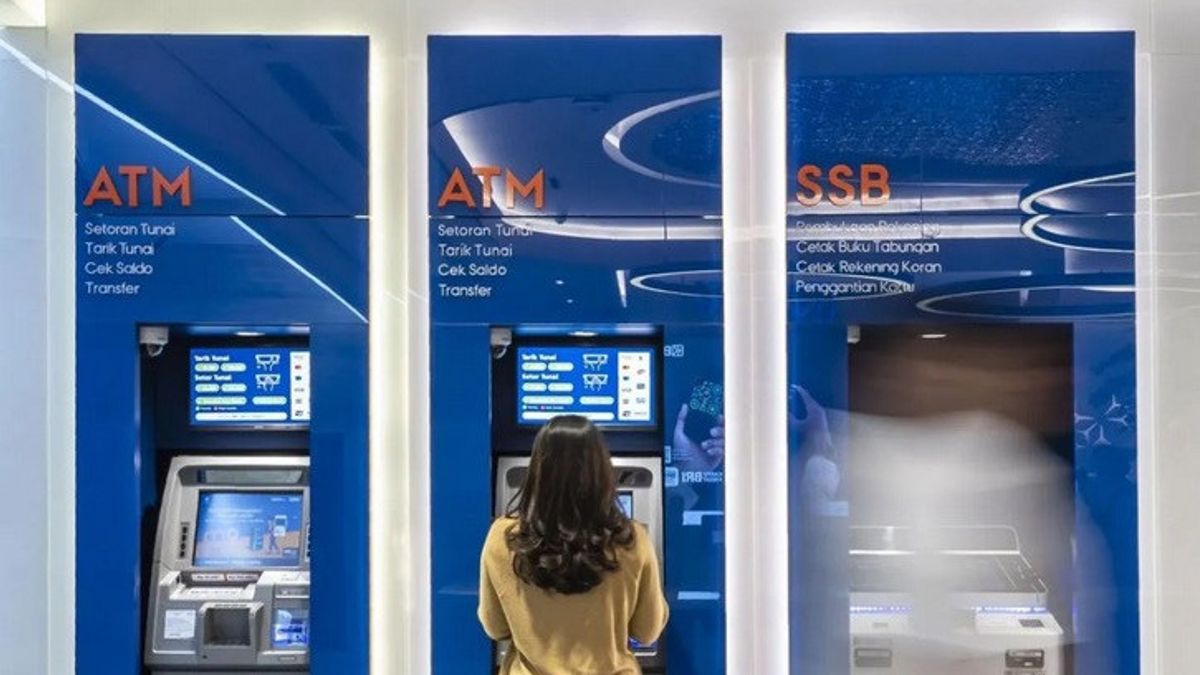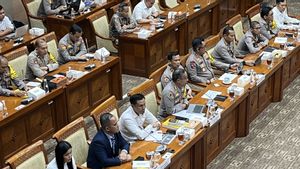JAKARTA The existence of an Independent Cash Machine or ATM is shrinking from year to year. Is this a sign of the end of the era of using ATMs among the public?
The phenomenon of the decreasing ATM machines in Indonesia is becoming a topic of conversation. Not only that, the shrinking number of ATM machines is also accompanied by fewer banking offices.
Based on data from the Indonesian Banking Surveillance released by the Financial Services Authority (OJK), the number of ATMs, CDM, and CRM in Indonesia at the end of 2023 reached 91,412 units. Whereas at the end of 2022 there were still 94,016 units, which meant experiencing a shrinkage of 2,604 units within a year.
Gubernur Bank Indonesia (BI) Perry Warjiyo mengatakan transaksi pemayan menggunakan kartu ATM dan debit turun 5,41 persen secara tahunan (year on year/yoy) menjadi Rp615,18 triliun per Mei 2024.
Quoting Kompas, the shrinkage of ATM card transactions is inversely proportional to digital banking transactions. Transaction digital banking reached IDR 5,570.49 trillion, an increase of 10.28 percent yoy.
The shift in the style of financial transactions that used cash to cashless was said to be the cause of the shrinking number of ATM machines in Indonesian banks. Because it no longer needs cash, the existence of ATM machines is also considered not too necessary.
Bank Rakyat Indonesia Tbk (BRI) recently reported that it had reduced about 1,600 ATM units. In March 2023, this state-owned bank still has 13,852 ATM units, but has shrunk to 12,252 units as of March 2024. This is also the largest number of ATM machine reductions in the banking industry.
This news is a bit surprising, although actually the shrinking amount of ATMs is a necessity in the midst of the increasing number of banking customers who are digitally literate. Even though BRI is a bank that has the widest and most widely spread networks in the country.
Bank Mandiri has also experienced a consistent decrease in the number of ATMs in recent years. In 2022 there were 13,027 ATM units operating, but decreased to 12,906 units in 2023. The reduction in the number of ATMs also occurred in other banks such as BTN and BNI.
In the midst of shrinking ATM card transactions, digital banking transactions have skyrocketed. According to reports, digital banking transactions reached IDR 5,570.49 trillion, an increase of 10.28 percent.
Electronic money transactions also rose 35.24 percent yoy to IDR 92.79 trillion.
The highest is transaction growth through the Quck Response Code Indonesia Standard (QRIS) which reached 213.31 percent yoy in May 2024. The number of QRIS users reached 49.7 million with 32.25 million merchants, most of which were MSMEs.
Investigating the number of ATM machines called observers occurs due to the digitalsavvyconsumer lifestyle. Of those initially using moneycash, now shifting using electronic money, banking applications, and QRIS for transactions.
Turning the use of cash into cashcashless or non-cash is increasingly intense in the era of the COVID-19 pandemic. At that time, cash was said to be one of the intermediaries for the spread of the corona virus.
Director of Technology and Digital Banking, PT. BTN Andi Nirwoto said this phenomenon is in line with the culture of people who want banking transactions quickly, easily, and can be done anywhere and anytime. This can be fulfilled only with capital for mobile banking applications.
"Following this trend, banks focus on developing mobile banking for banking services for customers. However, the number of transactions in ATM machines is recorded to be still stable, especially for cash withdrawal transactions," said Andi Nirwoto.
However, Andi added, although digital transactions have continued to increase in recent years, this does not mean that people will immediately leave the ATM function. For this reason, banks continue to innovate to replace old ATM machines with the Cash Recycle Machine (CRM) model. With this machine model, customers can not only make cash withdrawals, but also make cash deposits.
Meanwhile, banking observer and payment system practitioner Arianto Muditomo emphasized that ATMs will still be an important service for many customers, especially in areas that do not have adequate internet access.
Therefore, he said banks need to continue to innovate and adapt to customer needs. You do this by continuing to provide safe, accessible and customer service in the digital era.
"In time, a new balance will be found for users of full digital services, ATMs, and physical branch outlets," said Arianto.
However, the injection of the ATM unit did not occur in the private bank of PT Bank Central Asia Tbk (BCA). BCA has an ATM machine of 19,055 units as of March 2024. This figure is up 707 units compared to the previous year.
SEE ALSO:
The increase in the number of ATM machines was carried out because people who still needed it were doing financial transactions, according to BCA's EVP Corporate Communication and Social Responsibility Hera F. Haryn.
"In the midst of rapid digital transformation in Indonesia, we see that the presence of ATM machines and the use of debit cards still have an important role and are the choice of the community in financial transactions," Hera explained.
"We project that debit card transactions and the use of ATM machines will continue to grow in the future, in line with Indonesia's positive economic prospects and increasing community transaction activity," he added.
The English, Chinese, Japanese, Arabic, and French versions are automatically generated by the AI. So there may still be inaccuracies in translating, please always see Indonesian as our main language. (system supported by DigitalSiber.id)














